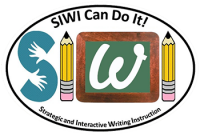The Language Zone: Differentiating writing instruction for students who are deaf and hard of hearing
Tags: ASL, grammar, interactive, language delay/deprivation, language zone, linguistic/metalinguistic, written languageInteractive Writing is a powerful support for language and literacy development; however, its emphasis on using oral language to construct written language can present challenges for deaf students due to their unique and diverse language experiences. Teachers (n = 14) using Strategic and Interactive Writing Instruction (SIWI) in grades 3–5 were observed using a space referred to as ‘the language zone’ (LZ) to address the needs of deaf students. The LZ is a space in a classroom where the creation, translation and revision of ideas is made visible. Researchers developed a flowchart with three tiers to document the purposes for which teachers use the space. Accompanying scenarios provide concrete examples. Teachers can use the LZ flow chart as a tool to recognize, analyze and select instructional moves that may positively impact the language and literacy proficiencies of deaf students.
Read in Full